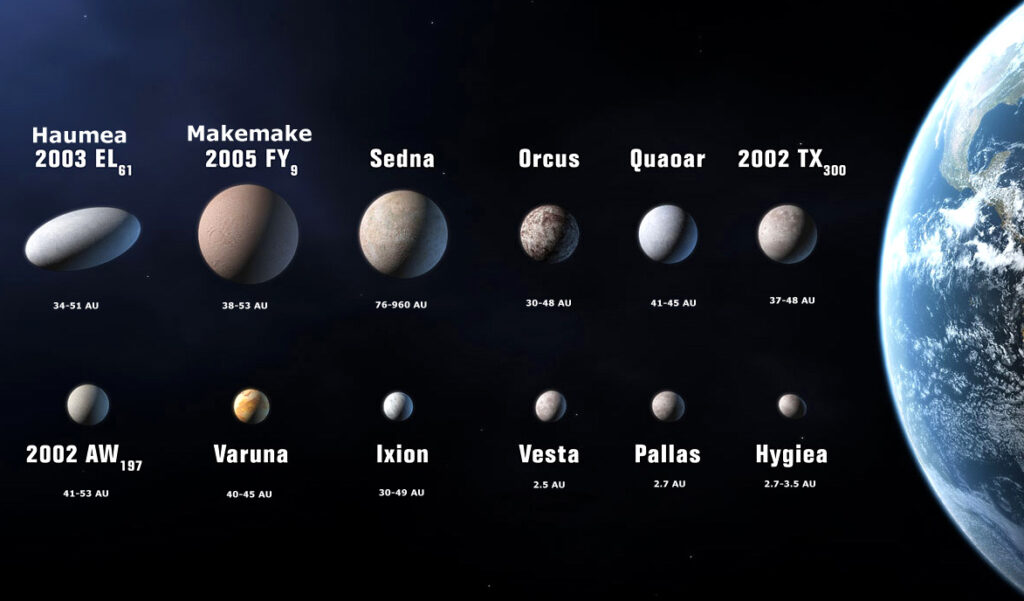- Pluto: Pluto is the largest and most well-known dwarf planet in our solar system. The first 5 recognized dwarf planets are Ceres, Pluto, Eris, Makemake and Haumea
- Turnaround time: Like other planets, the orbital period of dwarf planets varies – both around themselves and around the sun. This means that time units such as days and years have different values than on Earth. For example, 1 year on Pluto is about 248 years here on Earth. 1 year on Ceres is about 4.6 years here on Earth
- The Kuiper belt: Almost all of the dwarf planets in our solar system are found in the Kuiper Belt (including Pluto). The only dwarf planet outside the Kuiper Belt is Ceres, which is found in an asteroid belt between Mars and Jupiter
- Structure: Dwarf planets are primarily composed of rock and/or ice. The ratio of rock to ice depends on each dwarf planet’s location in the solar system
- Liv: None of the known dwarf planets can support life (at least not the life forms we know of)
- Atmosphere: The dwarf planets Pluto and Eris have thin atmospheres that expand as they move closer to the sun and collapse (or freeze) as they move away from the sun
- Rings: None of the known dwarf planets have rings
- Moons: Many, but not all, dwarf planets have moons. For example, Ceres has no moons, while Pluto has 5
- Dawn: The first mission to a dwarf planet is the ‘Dawn’ probe, launched on September 27, 2007. Its goal is to orbit Ceres in February 2015. In 2011, Dawn also visited and orbited the protoplanet Vesta. If the mission is successful, Dawn will be the first spacecraft to orbit 2 space bodies
- New Horizons: The first mission to the Kuiper Belt – where Pluto and most other dwarf planets are located – is ‘New Horizons’, launched in 2006 and scheduled to arrive in 2015

Fact: Ceres is the only dwarf planet in our solar system that is outside the Kuiper belt – in the inner solar system. Image taken by the Hubble Telescope in 2005
The definition of a dwarf planet
Before 2006, Pluto was considered to be an “ordinary” planet on par with the other 8 planets in our solar system. However, the discovery of a planet the same size as Pluto further out in the Kuiper Belt sparked a debate about the true definition of a planet and a dwarf planet. The result was a new official definition for dwarf planets, which has been in effect since August 24, 2006.
Dwarf planets are defined as celestial bodies that:
- Orbiting the sun
- Has enough mass to assume a (nearly) round shape
- Hasn’t cleared its orbit of material (unlike a “real” planet)
- Not a moon
The main thing that separates dwarf planets from plants, however, is point number 3: planets have cleared their orbits around the sun of material, whereas dwarf planets tend to orbit in zones where similar objects can cross their orbits around the sun (especially asteroid belts such as the Kuiper Belt). Another good rule of thumb is that dwarf planets are generally smaller than the planet Mercury.
The official definitions and rules for the distinctions between planets and dwarf planets are handled by the International Astronomical Union.
Plutoids
However, when Pluto was declassified from a planet to a dwarf planet in 2006, the International Astronomical Union recognized Pluto’s special place in the solar system and adopted the collective term ‘plutoids’ for all dwarf planets that are more distant from the sun than Neptune.





